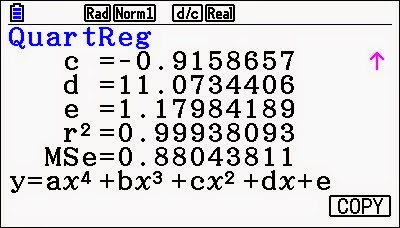Today's mathematician's quote is from G. Simmons who said "To isolate mathematics from the practical demands of the sciences is to invite the sterility of a cow shut away from the bulls."
The lives of my younger brother's are a study of contrast. My younger brothers are identical twins. Their births were two minutes apart. The oldest of the pair just recently became a grandfather while my "youngest" brother is teaching his 15 year old daughter how to drive. I was fortunate to have the majority of the driver's education instruction fall on the slender but resilient shoulders of my wife.
My real behind-the-wheel experience of learning how to drive fell on my mother. I have a number of experiences that I can recall during that time, many of them are not pleasant. During the 1970's seat belts were in cars but were not used by anyone in my family except for the time I slammed on the brakes in the middle of a busy intersection catapulting my mother's head to the windshield of our banana colored 1972 Ford LTD.
This is the car that my brothers and I referred to as the "banana boat".
I am sixteen and have hair.
A constant discussion between my mother and myself was my obsession with speed and lack of the proper use of the "gas pedal". The following sketch represents my mother's lament about the use of the accelerator. She would often describe me as a "heavy foot" driver.
The graph that is labeled "Chuck" illustrates a quick gain of distance in a short period of time while the other graph labeled "Chuck's mom" indicates a gradual gain of distance in a greater time span. Both of these graphs are defined as position functions. They depict the distance traveled over an interval of time. The graphs are both increasing; one quickly, the other gradually both they differ in terms of mathematicians call concavity. The "Chuck" graph is concave up and my velocity is increasing. In calculus, velocity can be viewed as the slope of a line tangent to a position curve. I have examples below.
Notice for the same time value, x = 3, the slope of the green line on the upper graph is 0.2886 and the lower graph it is 6. When time increases as in the next two graphs, the slope decreases to 0.25 in the upper graph but increases to 16 in the lower graph.
In the upper graph, my velocity has decreased for another unit of time. I have negative acceleration. My mother is relaxed, viewing the dafodils blooming in the neighbor's garden, and sets aside the belt buckle she had placed in her lap. I turn down the volume on the radio as Perry Como sings "Mama Loves Mambo".
In the lower graph, my velocity has increased for another unit of time. I have positive acceleration. My mother has been forced further back into her seat, her eyes are closed, her teeth are clenched, and she is gripping tightly to the door handle. I, on the other hand, have the window open, and am looking for tanned coeds that are enthralled by the power in front of me.
When velocity and acceleration have the same signs (they are both positive or both negative), speed is increasing. When velocity and acceleration have opposite signs, speed is decreasing. Here is another example.
This is a graph of two velocity functions. Each graph is moving towards the x-axis. On the x-axis, each will have a value of zero so each velocity function is decreasing.
The slopes of the lines tangent to each of these graphs represents the acceleration of an object at a particular time, x.
These diagrams indicated that the acceleration is decreasing (-2 to -3),velocity is positive, and speed is decreasing.
The above diagrams show that acceleration is increasing, velocity is negative, and again speed is decreasing.
I have mellowed out in my quest for speed. I have become accustomed to letting the other drivers pass me by while I reflect on the mathematics I see around me. :-)
























